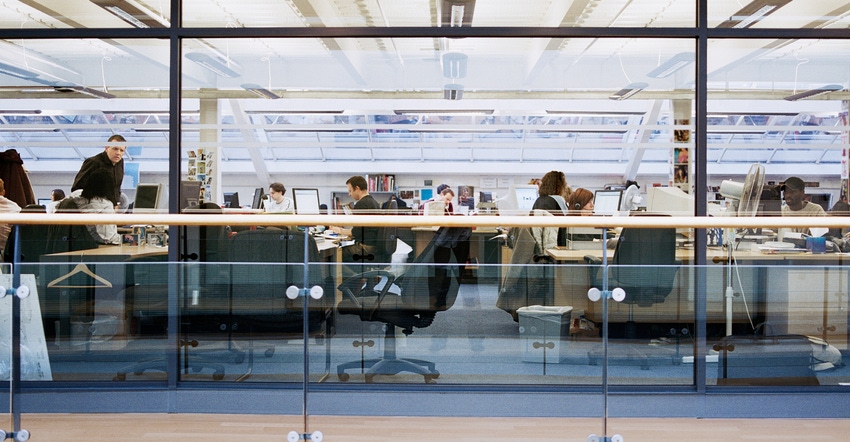Ten Ways to Reduce Waste at the Office
September 22, 2021

Meredith Lindvall
Picture the last thing that you threw away. A water bottle. A sandwich. An old sofa. Now think about where that item will ultimately land. If you don’t know, you’re not alone. When we throw things away, we’re not usually conscious of where precisely “away” is.
Too often, our trash goes to landfill. According to the most recent data from Environmental Protection Agency (EPA), more than 146 million tons of municipal solid waste went to landfill in 2018. As we all know by now, these mountains of garbage are growing environmental hazards, whether due to leakage that causes water contamination or because of the release of dangerous amounts of carbon dioxide and methane.
Companies can help reverse this trend by making waste diversion a cornerstone of their sustainability efforts. Developing programs and policies for reducing, reusing and recycling materials that would otherwise be destined for landfills can make a positive impact on our planet as well as for a company’s bottom line.
Zero Waste to Landfill
At Cox Enterprises, our goal is to send zero waste to landfill by 2024. I sometimes joke that when I see that date in writing it looks like a typo. The truth is that it’s an enormous task for an organization.
But we’re on track. With careful strategy, company-wide education and engagement, and creative ideas generated from employees, today we have diverted more than 506,000,000 pounds of waste from landfill since we launched our waste efforts in 2013. We are more than 84 percent to our goal of zero waste to landfill.
Although zero is our goal, this is not an all-or-nothing endeavor. What I’ve learned is that every business can divert less waste to landfill.
Here are a few things to help you get to your goals.
Track trash. Conduct a waste audit to analyze the type of waste and volume of waste that your business generates. A waste audit team collects waste and recycling materials from your company for a week and then identifies the biggest sources of waste. You may be surprised to know what’s going into the trash that could be recycled or reused.
Talk trash. Educate employees on the importance of reusing, recycling and composting. Get them thinking about ways in which they can generate less waste. Ensure that employees understand where to dispose of recyclable items. Make sure there are specific locations, like in a breakroom or cafeteria.
Turn garbage into gold. Recycling, reusing and composting materials otherwise destined for landfills can result in cost savings and additional revenue. Not only can you spend less on waste disposal, but you can also attract and retain environmentally conscious customers and employees through more eco-friendly practices.
Set up an office composting system. Things like coffee grounds and orange peels are compostable. Set up separate, clearly marked receptacles for composting and true waste.
Celebrate wins along the way. Incentivize people in your divisions, departments or locations when they show progress on this journey. Don’t wait for big milestones to reward efforts.
Make it easy for customers to join in. Introduce recyclable materials in packaging or give them a simple way to return old equipment or products.
Work with vendors and suppliers to reduce waste. Ask your vendors to provide data on their environmental footprint (carbon, water and waste). Collaborate to come up with creative ways to recycle and reuse their materials.
Team up with environmental nonprofits. Support local projects, such as river clean-ups, where employees can get involved and see results.
Work with housekeeping to ensure that what is thrown “away” goes to the right place. Your housekeeping team is your last line of defense – be sure that what your employees are putting into recycling bins ultimately goes to a recycling center when it leaves the building. (Try color-coded bins and bags.)
Nix the coffee cups. Each year people throw out 16 billion disposable coffee cups worldwide. Try providing employees with reusable mugs instead.
Getting to zero waste can be a long haul, but getting to better than before is possible for virtually any company.
Meredith Lindvall is director of recycling & waste diversion at Cox Enterprises.
You May Also Like


